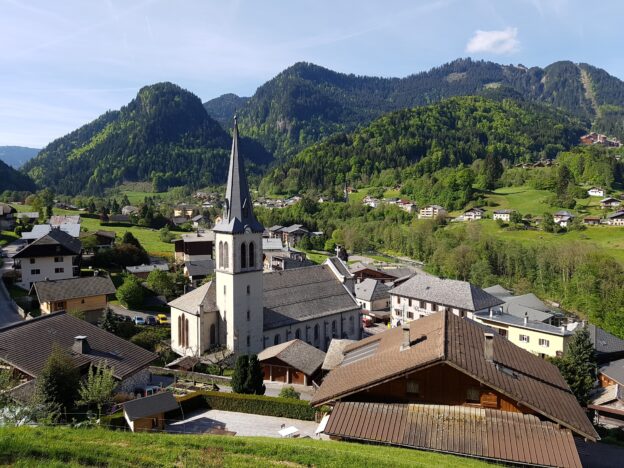This post is also available in: Français (French)
Altitude of the village 810m
Population 1600
Distance to Geneva airport: 1h15
Nearest Train: Thonon-les-Bains (30 min)
Skiing: Portes du Soleil – 600km !
All the properties we have for sale in St Jean d’Aulps
https://alpine-property.com/stjeandaulps
Our online valuation tool for St Jean d’Aulps
https://alpine-property.com/st-jean-daulps/valuation
The skiing in St Jean d’Aulps
Bottom of the ski lift 945m
Top ski lift 1725m
The skiing in St Jean d’Aulps is at the “La Grande Terche”, which is also known as the Espace Roc d’Enfer, there are 52km of pistes available in this self contained area. The ski area is not connected by piste to the rest of the Portes du Soleil.
The Portes du Soleil lift pass covers the skiing at St Jean d’Aulps, it is also possible to buy a cheaper local area ski pass for the Espace Roc d’Enfer, this pass does not cover skiing in the rest of the Portes du Soleil.
Connecting the ski area to the rest of the Portes du Soleil
Over the years there have been plans to connect the area to the skiing at Mont Chery (Les Gets), it would be fairly easy to do, however these plans have come to nothing, mostly thanks to environmental concerns. Despite what you might hear, these issues mean it will probably never happen. Currently only fairly adventurous ski tourers make the connection.
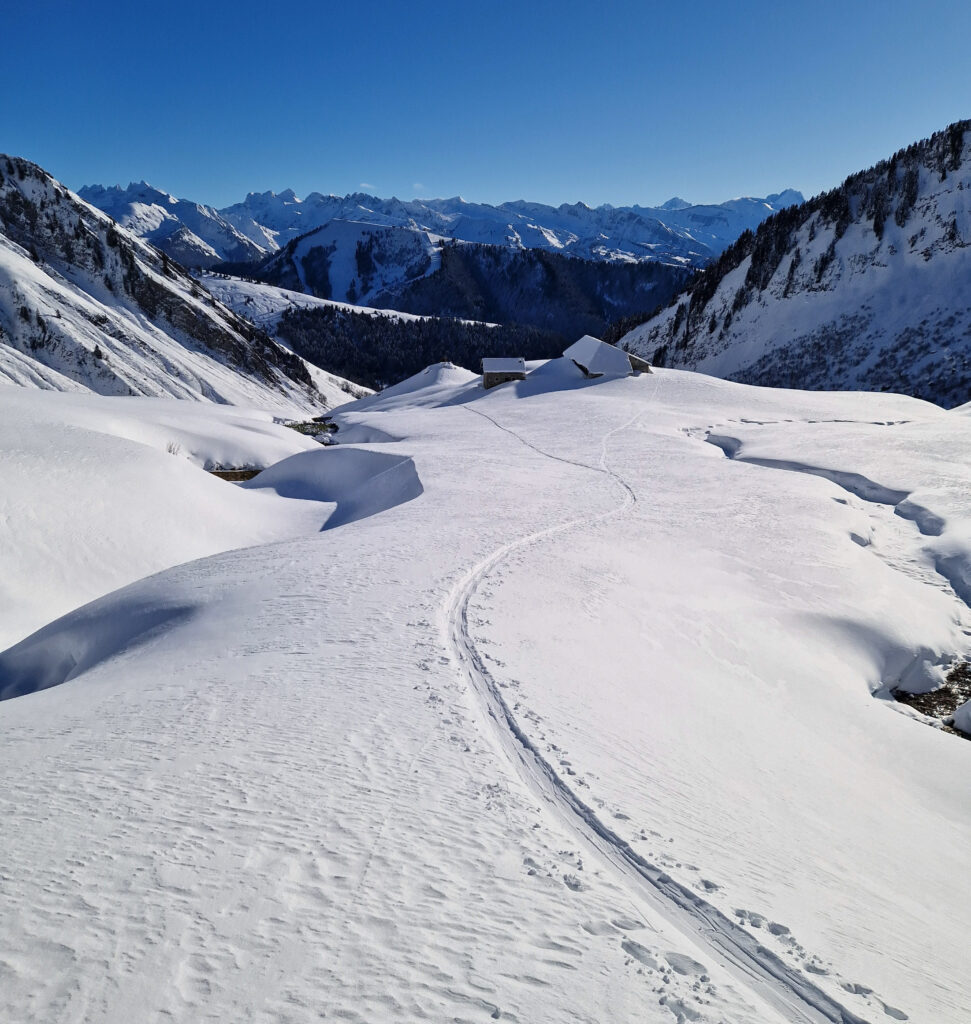
The origins of St Jean d’Aulps
An “Aulp” is a mountain pasture or in modern French an “Alpage”, so the name refers to St Jean of the Alpages.
The origins of St Jean d’Aulps date back to the medieval times. The village grew around the Abbaye d’Aulps, a Cistercian monastery founded in 1094 by monks from the nearby Abondance Abbey. This abbey was the economic and administrative seat for the valley, and the village itself developed around it to support the abbey and its activities. At this point the now more well known village of Morzine hardly existed.
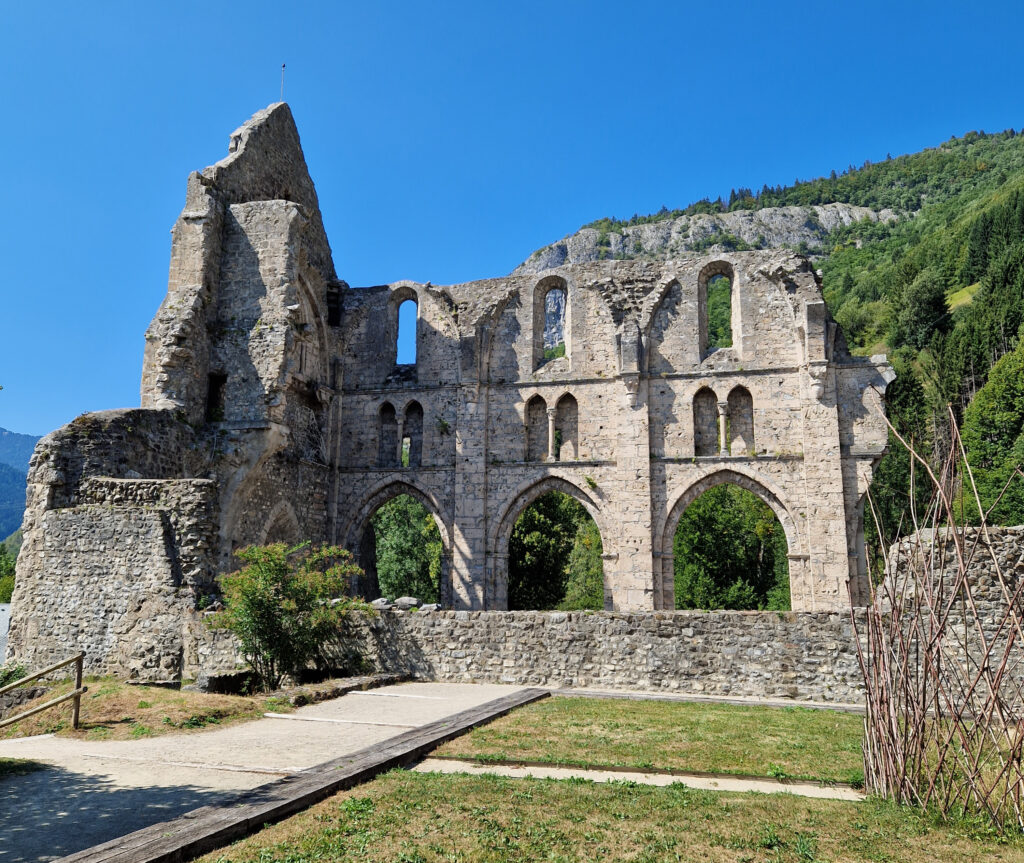
19th century
From the time of the French Revolution until the World Wars, the valley was much busier than it is now. Despite its relative isolation from the rest of France, the permanent population was almost twice what it is today. It was an agricultural society that practiced transhumance – moving livestock up to the high alpine pastures in summer and bringing them back down to the villages in winter. Evidence of this can still be seen in the chalets d’alpage scattered across the hills. Today, these chalets are mostly used as rustic weekend retreats, though many ruined chalets remain hidden in the forests, telling the story of the 19th century.
This way of life began to decline during the First World War. The men were called to fight on the nearby front, and the families left behind struggled to maintain the harsh lifestyle. The devastation the war brought to the local population is clearly visible on the war memorials in each village.

The Abbaye d’Aulps
The abbey’s influence began to decline after the 16th century and came to a complete halt following the French Revolution in 1789. Like many other religious symbols and buildings in France, the abbey was abandoned and left to fall into ruin. According to local folklore, villagers at the time went so far as to use explosives to break up the abbey’s walls, repurposing the stone to construct a second church in the village. Today, remnants of the structure remain and are a significant part of the village’s historical heritage. The ruin, both striking and atmospheric, still features parts of the original architecture, including the church façade and surrounding buildings. The site has been partially restored and is open to visitors, offering a glimpse into its rich medieval history. https://en.abbayedaulps.fr/
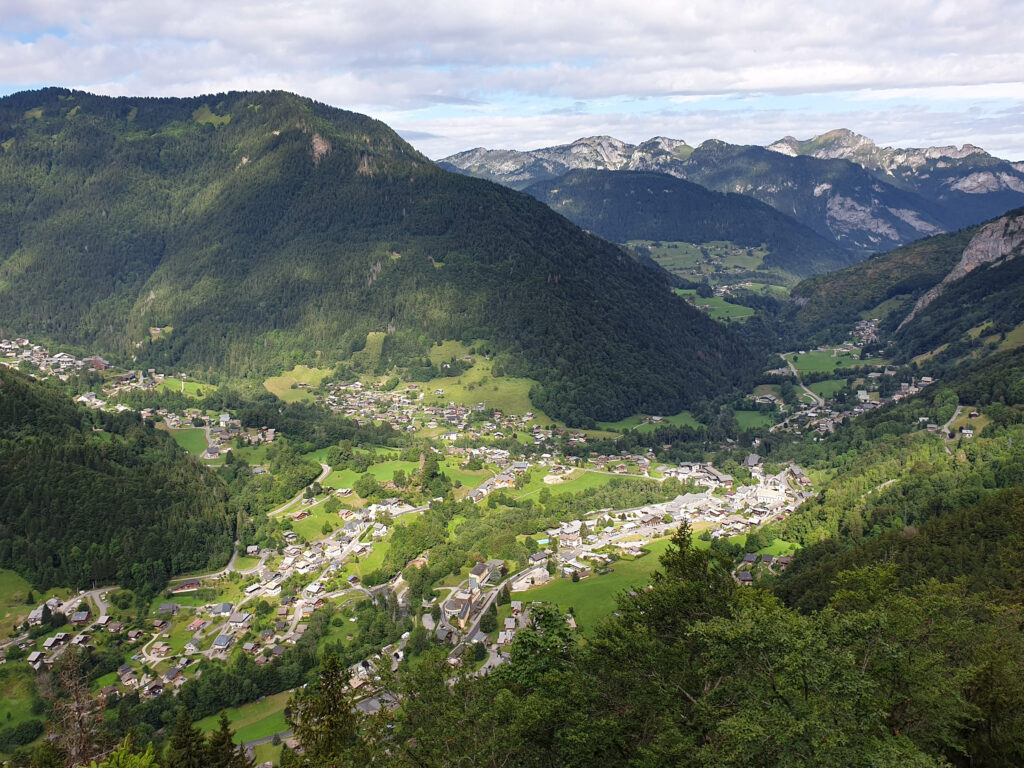
St Jean d’Aulps today
This is where I would typically use words like “charming,” “authentic,” and “nestled,” but if you take a moment to view the images or the video, these qualities become self-evident. Today, Saint-Jean-d’Aulps is a thriving village with a year-round community. When I moved here 23 years ago, it was considered second best to Morzine, a more affordable place for those working in Morzine to live. Now, the village is valued for its space, tranquillity, and vibrant year-round life—qualities that are increasingly rare in the better-known villages of Morzine and Les Gets.
The most recent census counted 1,600 inhabitants, marking a growth of nearly 30% since 2015 and 60% since 2000.
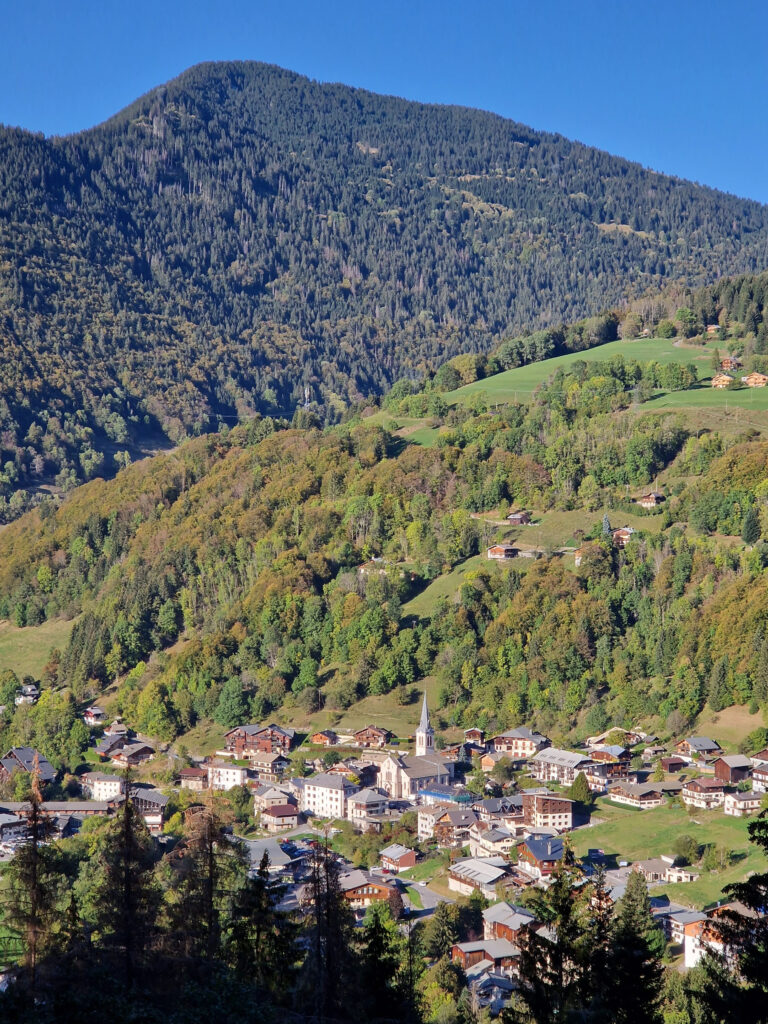
Schools in St Jean d’Aulps
There are 3 schools in St Jean d’Aulps.
- Collège Henri-Corbet, 430 students with a catchment that covers 11 communes, from La Forclaz in the North to Les Gets in the South. This provides schooling for local children from ages 11/12 to 15/16 (6ème, 5ème, 4ème 3ème)
- Primary school for children aged 6/7 to 10/11 (CP, CE1, CE2, CM1, CM2)
- Nursery school for children aged 3/4 to 5/6 (PS, MS, GS)
Beyond 16 the schooling is in Thonon or Evian les Bains, there are ‘internat’ that allow the students to stay the week at school to save the 30 min of travelling up and down the valley.
Amenities in the village.
There is a Town hall, Post Office, a small supermarket in the town centre, 2 bars, 2 restaurants, 2 bakeries, a campsite, there is also a large supermarket between the village and Morzine that serves the whole valley.
Amenities at the ski area (La Grande Terche)
32 pistes, 2 blacks, 12 red, 11 blues, 7 greens. 16 lifts, a popular 20km circuit. Probably the best beginners area in the entire Portes du Soleil, very popular with families with children that are learning and with people trying to save a few €’s. At the carpark level there is a convenience store, multiple bars and restaurants, most of which close outside of the two holiday seasons.
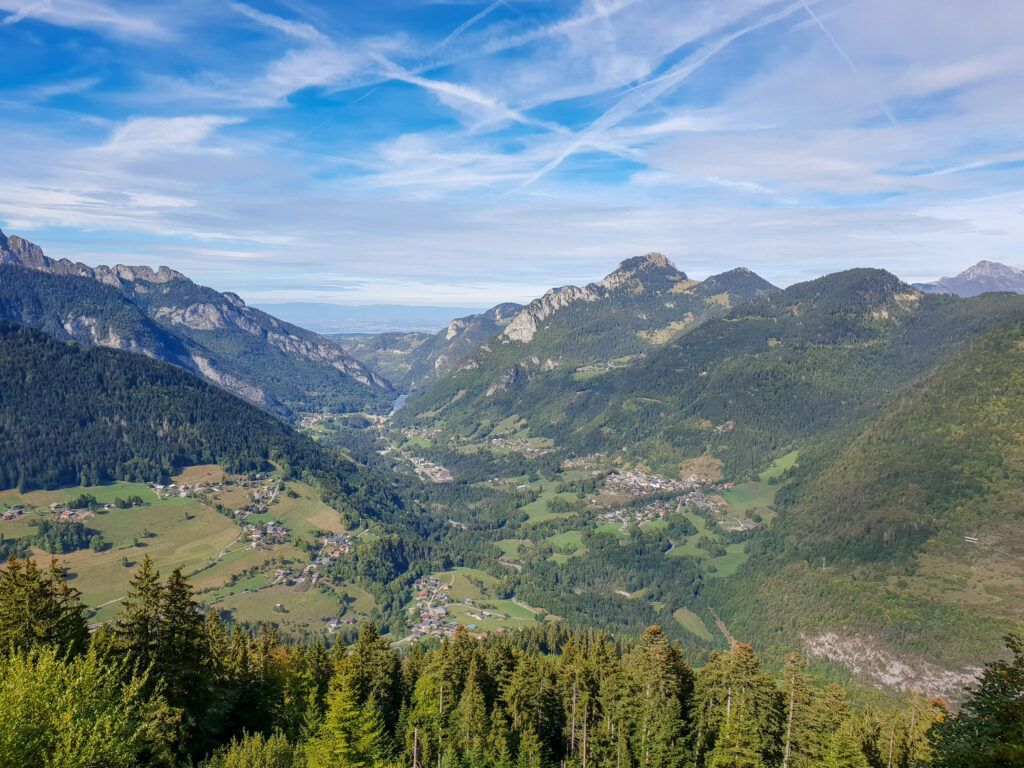
Surrounding villages
Le Biot, 820m, 5 min from St Jean d’Aulps and facing the village of Seytroux. Another growing village, it has its own town hall, as of 2021 a population of 639 inhabitants. It has its own primary/nursery school, bar restaurant, bakery, and a deli.
Seytroux, 850m, also 5 min by road, population 532, it has a Mairie, primary/nursery school and a restaurant.
La Baume, 733m, 10 minutes down the road, 321 inhabitants and its own Mairie too. The is an excellent history of the village to be found on its French wikipedia page https://fr.wikipedia.org/wiki/La_Baume
Essert La Pierre, 937m, situated between St Jean d’Aulps and Morzine, it is part of the commune of St Jean d’Aulps yet very much a distinct hamlet.
Events in St Jean d’Aulps
Emmontagnée (de la Ferme du Mont Caly), held at some point towards the end of May (depends on the weather), anyone can accompany the cattle up onto the hill for the summer.
Village Fete, first Sunday of August – aka Vougha Shi No (fête chez nous in Patois)
Fête médiévale at the Abbey, the 3rd Sunday of August.
Foire d’Automne and wine fair, held towards the end of October.
Christmas market, middle weekend of December.

